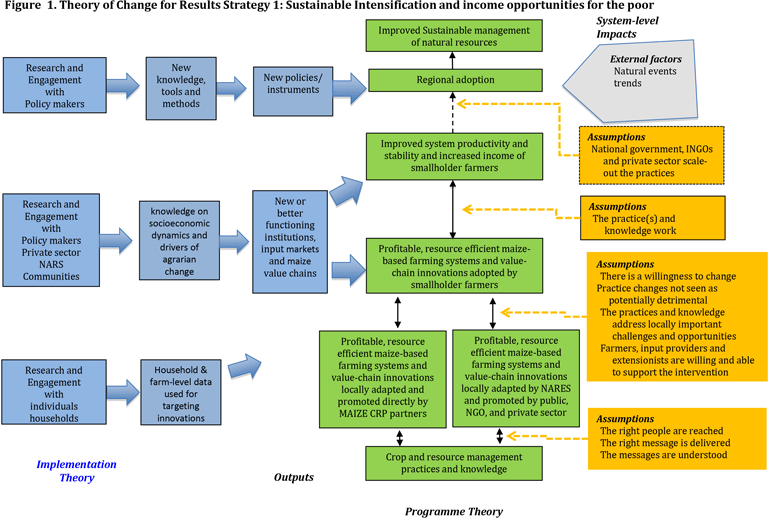4. Identify the assumptions
Assumptions are rules of thumb that influence our choices. We use these rules of thumb both as individuals and as organisations. When we create our mental picture of how change is going to happen, we make a number of assumptions about the situation (context) and how people and organisations are going to act and behave. These are called contextual factors. But we also make assumptions about the Pathway of Change that we are designing:
- We assume that all existing conditions (outcomes) have been identified
- We make assumptions about the connections between the outcomes and how they can be achieved in the short/intermediate/long term.
- We assume that the planned interventions will lead to the desired outcomes.
We have to make the assumptions explicit, so that they can be debated, enriched and checked (by us before we start to do things or by evaluators in the course of an intervention or thereafter.
So listing the assumptions is not enough: it is important to test them – not just at the design phase but throughout the lifetime of the Theory of Change. This is why the identification of the assumptions is important, because then we can verify if they hold true. If they don’t, we will need to update our ToC and adapt or increase our interventions.
Together, the conceptual pathway / Theory of Action and the assumptions make sure that the ToC can be tested and validated or disproved (partially or as a whole). Evaluators can verify to what degree the outcomes are achieved, whether the assumptions hold true and whether the theory as a whole leads to the achievement (or contributes to) of the end goal.
The result of this (initial) process is:
- the Theory of Change diagram: in some cases the reality is so complicated that a single diagram becomes too complex. So organisations sometimes use different diagrams or in some cases don’t bother with the diagram and only use a narrative document.
- a narrative document that describes the expected story about how change is going to happen. It also explains and details the different elements of the Theory of Change.






Add new comment